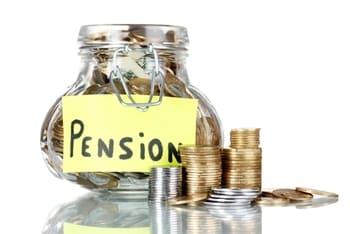For the average person in the UK, the world of pensions can be very confusing. In this article we'll cover the basics and give you a solid grasp of the options available to you today. No matter how they're structured, all pensions are designed to achieve the same thing - to give you a way to save your income and enjoy a comfortable income during your retirement.
Pensions - The Basics
Pensions are nothing more than savings plans designed to allow you to build up a nest-egg to provide you with a comfortable income during retirement. What differentiates it from a normal savings plan are the tax benefits you can enjoy. In other words you pay less tax!
The UK Government provides a basic pension to almost every adult in the UK - its just not very much to live on - which is why we strongly recommend augmenting the state pension with your own. Saving a little money on a regular basis, throughout your work life can have a major impact on the quality of life and flexibility you enjoy during your retirement or semi-retirement.
There are quite a few different pension options other than the State Pension. Many people take part in a Workplace Pension Scheme (provided by employers) while others set a pension up themselves. You can even save into more than one pension as well as tax-free savings vehicles like cash ISAs.
At retirement, you'll have a number of options including taking a sizeable tax-free lump sum or receiving a regular monthly income. Or a bit of both!
All About The State Pension
From the 6th April 2016, the state pension system will change to a flat-rate, single tier state pension with a full level of £155.65. Whether you qualify for the full new state mention will be determined by the number of years you've paid tax via National Insurance Contributions (i.e. via your salary).
Amongst existing pensioners, there will be winners and losers when the new pensions rules come into force. Those who will generally be better off under the new system include the self employed, women, carers and low paid workers. Those who may be worse off include workers with less than 10 years of NI Contributions, workers with more than 35 years of NI Contributions, high earners and your "other half" (wife, civil partner, widows and widowers) who will no longer be able to claim/inherit a pension based on your NI contributions.
How Does A Pension Scheme Work?
There are different types of pension scheme available but they are usually either classified as being "defined benefit" or "defined contribution". Here we will explain the differences and the rules applied to each.
A defined benefit pension scheme will give you a specified monthly income when you reach retirement age. The formula used to calculate your income is based on your salary over the years and the number of years you have worked. Your employer will pay contributions on your behalf but it is common for you to be asked to top up the scheme by paying in your own contributions on top. The exact details of your scheme can be provided by your employer.
A defined contribution pension scheme allows you to build up your own pot of money throughout your working life. The income you will receive after retirement is not guaranteed in advance. Instead, the money is invested on your behalf and the value of your pension will depend on the amount of money paid in and the performance of these investments over time.
Automatic enrolment is a reasonably new Government initiative (being phased in since 2012) that forces employers to enrol all eligible workers in a formal workplace pension. Employers are required to pay a small contribution on behalf of the worker while employees can add to it as they wish. The aim is to ensure every worker in the UK has a private pension to top up their state pension during retirement.
Contract Based Pensions
Such pensions are provided by private companies - either insurance companies or other private pension providers. Under such schemes, the worker will sign a contract between himself and the pension provider. Type of Contract-Based Pensions include;
Personal Pensions
Personal pensions are a type of defined contribution scheme available to the employed, self-employed and unemployed. Employers can also contribute to the scheme on your behalf. In fact, anybody can contribute to anybody else's pension which would allow spouses to contribute to each other's pension or even set up a pension for their children. There are tax benefits associated with these schemes although the total amount you can pay into them is capped annually, even though the number of individual pensions you hold is not capped.
You can have a Personal Pension on top of a workplace pension scheme and most pensions can be moved if you change jobs or stop working.
All of the money you pay into a personal pension is invested on your behalf. You have a choice of how and where the money is invested via a wide (but not unlimited) range of funds. You can also move money around between funds (for a small fee). The trick is to choose funds which match your risk profile. Funds are usually ranked on a scale of 10 with 1 being the lowest risk but least profitable funds while those ranked 7 and above are deemed higher risk which will likely mean more volatility and a greater chance of losses (although the risk is diminished in the long term).
Please make sure you get personal advice from a specialist when setting up a pension fund and choosing where to invest your money.

Drawing Pension Benefits
Another benefit of Personal Pension Schemes is their flexibility - you have the option of taking money out of the scheme from the age of 55, even while still working. Up to 25% of the pension pot can be withdrawn as a tax-free lump sum. The remaining pension pot can then be used to provide an income in retirement or further lump sums can be withdrawn (although these will be liable to taxation).
The "income during retirement" from the remaining pension pot can be administered in a number of different ways including taking out an annuity or an income drawdown, or some combination of them both.
SIPPs (Self Invested Personal Pensions)
SIPPS are another type of Personal Pension. The only real difference is that they offer a much wider (and more confusing) range of investment opportunities than regular Personal Pensions. These include;
- quoted UK and overseas stocks and shares (the core investments in regular Personal Pensions)
- unlisted shares
- collective investments
- investment trusts
- property and land insurance bonds.
Stakeholder Pensions
These are effectively Personal Pensions for groups of employees (all employers with 5 or more employees must provide one). These pensions are regulated closely by the government and operate in much the same way as Personal Pensions. Employers will contribute to the scheme but often require the employee to contribute as well.






